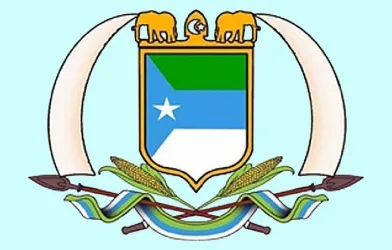Somalia is a nation at war with itself. On the one hand, there is an ideological…

Somalia is a nation at war with itself. On the one hand, there is an ideological and constitutional dichotomy between member states and the federal government. On the other hand, Al-Shabaab is engaged in an active war against all Somalis. The Somalia government has been battling with prolonged conflict and insecurity since the central government’s fall in 1991. The source of insecurity is mostly the activity of Al-Shabaab. Al-Shabaab is an Al-Qaeda affiliate that operates primarily from the country’s southern and central regions. The group is fighting the Somali Federal. Somalia become a federal republic 2012. The provisional Constitution of Federal Republic of Somalia was adopted on August 01, 2012 by a National Constitutional Assembly in Mogadishu, Banaadir. Al-Shabaab was formed in 2004 as part of the Islamic Courts Union (ICU), a network of Islamist militant tribes that controlled southern and central Somalia and fought against what they considered an Ethiopian invasion. After the defeat of ICU in 2006, Al-Shabaab took up the cause and continued fighting Somalia’s successive governments and anyone associated with them (Farhia Ali Abdi, 2016).
The fight against Al-Shabaab, however, is complicated by factors such as clan-based politics, governance issues, and humanitarian crises. Somalia’s instability and weak central government institutions posed significant challenges in addressing the insurgency effectively. When President Hassan Sheikh Mohamud recently declared war on the Al-Shabaab militia for the second time during his presidency, he promised to end this fight. Once more, President Mohamud vows the “military operations against al-Shabaab will not stop until final victory is achieved” (Reuters interview, August 29, 2023).
While the president has made headways with his rhetoric about the defeat of Somalia’s extremist insurgents, what becomes glaringly obvious is the government’s inability to consolidate the territories they gained from the militia. Al-Shabaab has become much more adaptable and agile and has managed to stay a step ahead of the government. This is not by chance. They have allies in every local and national government as well as in some community leaders. Thus, the question is, how willing are those who are waging the war to fight with this extremist militia? Thus far, they are failing spectacularly.
The militia seems to be emboldened, and people are more frightened of them, than ever before as the government becomes more of a liability than an ally, particularly in the rural areas. While the government’s operation dealt the militia some blows, it is far from eradicating the militia all together. The extremists have built roots in almost every community, particularly in the south and central regions, and they vigorously try to eliminate anyone or anything in their way.
Military Operation and Counterterrorism Effort
The Somali National Army (SNA) and AMISOM have been conducting military operations against Al-Shabaab in various parts of the country for close to two decades. These operations have been aimed at weaken the group’s capabilities and regaining control of the territories. However, while there have been some successes, there have also been many setbacks, as Al-Shabaab seemed to have a more reliable counterintelligence than the government. The government has been working to enhance its counter-terrorism capabilities, including training and equipping its security forces to better deal with the threats posed by Al-Shabaab. Even with this support, there is a fatigue in fighting this endless war.
It appears that the Somali government is also engaged in a containment strategy in the face of the faltering strategy to end the insurgency. The government’s fight against the militia appeared as a hopeless venture to those who were directly impacted by this extremist militia’s daily cruelty, both economically and physically.
The Somali military and their allies raid Al-Shabaab stronghold areas, but as soon as they declare victory, they vacate the area. According to the people living in these areas, the militias do not engage in the fight, but retreat to the outskirts of the towns. When the government army leaves, they return. So, Al-Shabaab warns the town’s people not to cooperate with the government because they will be back when the army leaves. This has often been the case. Therefore, the people do not cooperate with the government; they stop trusting them. For instance, Ceelbuur, (south-central region) and its surrounding areas, which have been declared free from the militias, appear to have fallen back into Al-Shabaab’s hands following the departure of the army. In addition, the army suffered a humiliating defeat in Cowsweyne where hundreds of soldiers were killed. Even the president admitted defeat in this battle.
The fight with Al-Shabaab should not be only about winning territories back but also about retaining it once it is gained, something the government has been shown to be incapable of achieving. Perhaps this failing is caused by lack of manpower, financial resources, and/or poor training. But, according to international partners, the Somali government is well funded to meet the needs of the army in the fight against the terrorist group. Not retaining the territories once gained has become a pattern, particularly for this president for whom the fight of Al-Shabaab has become a mandate for his administration.
The international partner’s support that the government receives for training and funding appear to show nothing if any achievements, but losses of lives for both the army and masses. One would wonder, if this is a game of corruption to keep the mirage of fighting terrorist in order to keep ‘milking-the-cow’ as it were. Or, perhaps it is a genuine fight to free the extremist’s stranglehold on the Somali people. But this is not clear; what is clear is the glaring shortcomings of this fight.
In an apparent realization of corruption, President Mohamud in his VOA interview promised to correct “mistakes” and vowed accountability. “It’s time to reward heroes among the soldiers; and to hold those abusing their responsibilities, who committed treason or undermining the army, accountable,” he said. This involves efforts to handle corruption within the government and promote potential and proper recruits for government employees, security forces, and politicians. The government needs to put more effort to improve security and attempts to stabilize governance in the country.
Political Stability and Governance:
Establishing a stable political environment and improving governance is seen as crucial factors in weakening the appeal of extremist groups like Al-Shabaab. However, this involves addressing underlying socio-political issues like the relationship between the central federal government and the federal regions and fostering a sense of inclusiveness. Somalia’s situation is complex, with multiple layers of conflict, including clan disputes and political rivalries. Additionally, Al-Shabaab has shown resilience and adaptability, continuing to launch attacks even in areas where it has been pushed out.
The federal government leaders need to think in broader terms about governing the country. Government leaders need to move beyond clan-based segmentary and personal conflict. Beyond military and security measures, there is a need to counter Al-Shabaab’s extremist ideology, in order to destabilize their discourse. This could be through a counter-narrative campaign and propaganda both inside the communities they invested in or outside. The security problem in the country is mainly rooted in its lack of serious and credible political leadership.
Looking forward: Both the regional and federal governments need to encourage the religious leaders and elites to counter the radical interpretation of the religious texts. They also need to create and enact comprehensive policies aimed to eliminate extremist insurgents like Al-Shabaab. In addition, a platform for social, security, and financial redevelopment of the country, including reconciliation, is needed.
The regional and federal governments also need to have an accountability measure for the actions they take towards addressing corruption. There is also a need to account for the achievements made to reduce extremism. If such accountability is not centered, the alternative will be posturing to fight terrorist while not actually ending the war of terror.
Saving Somalia will require serious leaders who can acknowledge the reality of the country and who can bring the regional leaders into dialogue. Doing so will encourage shared responsibility for the security of the country and bring peace to its people. Of course, they cannot do this without international support but, that support will require respecting the Somali people’s internal deliberations and decisions to deal with their affairs without interference from outside.
The country’s government leaders need to approach security as a national priority and not a stop-gap measure to suit their own ideological and political advancement. They need to increase coordination among civilian, police, and military agencies by building trust and achieving tangible and sustainable gains from the extremists. Whether they can genuinely win the war of terror and have the strength they profess to defeat this dangerous militia, time will tell.
by Farhia Ali Abdi.







